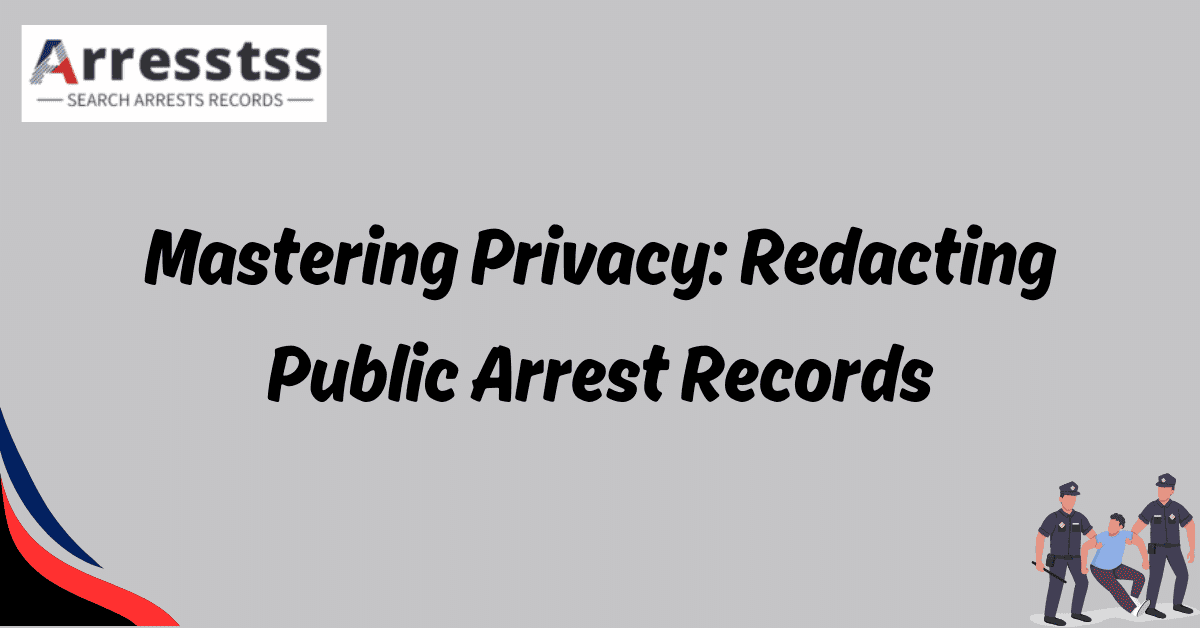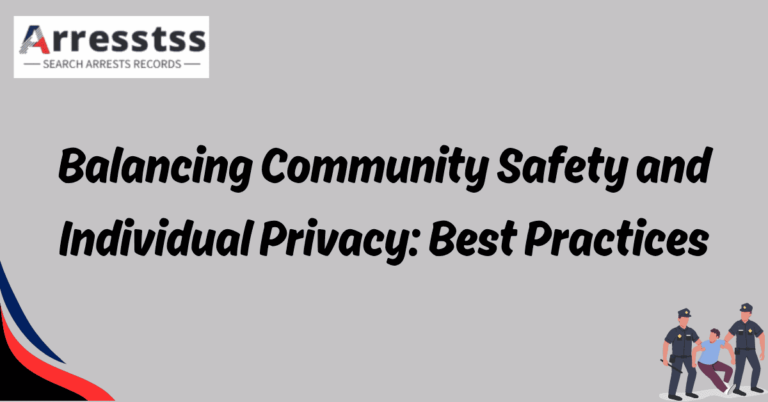Mastering Privacy: Redacting Public Arrest Records
Privacy Matters in Public Arrest Records
In today’s digital age, privacy has become a paramount concern for individuals and societies alike. This is especially true when it comes to public arrest records. These records contain sensitive information about individuals who have been arrested, and it is crucial to handle this information with care and discretion.
Importance of Redaction Techniques
Redaction techniques play a vital role in safeguarding privacy in public arrest records. Redaction involves the removal or obscuring of certain information that may be considered private or sensitive. This can include personal details such as addresses, social security numbers, and dates of birth.
Protecting Individual Privacy
By redacting this information, the privacy of individuals is protected, and the risk of identity theft or other malicious activities is significantly reduced. It ensures that only the necessary and relevant information is made available to the public while safeguarding personal privacy.
The Role of Expertise and Attention to Detail
Proper redaction techniques require expertise and attention to detail. It is essential to ensure that all sensitive information is effectively removed while still maintaining the integrity and usefulness of the record. This involves using specialized tools and software, as well as following established guidelines and best practices.
Striking a Balance
The goal of redaction techniques is to strike a balance between the need for transparency and accountability in public arrest records and the protection of individual privacy. It is a delicate task that requires careful consideration and adherence to ethical standards.
Transparency and Accountability
Public arrest records serve an important role in ensuring transparency and accountability within the criminal justice system. They allow the public to access information about arrests and criminal activities, promoting trust and confidence in the system.
Protecting Personal Privacy
At the same time, it is crucial to protect personal privacy and prevent the misuse of sensitive information. Redaction techniques help achieve this by removing or obscuring private details that are not relevant to the public’s right to know.
FAQ’s
Why is privacy important in public arrest records?
Privacy is a fundamental right that should be respected and protected in all aspects of life. In the case of public arrest records, privacy is particularly important because these records contain sensitive information about individuals who have been arrested. This information can include personal details such as addresses, social security numbers, and dates of birth. Protecting privacy in public arrest records is crucial to prevent potential harm, such as identity theft or other malicious activities.
What are redaction techniques?
Redaction techniques are methods used to safeguard privacy in public arrest records. Redaction involves the removal or obscuring of certain information that may be considered private or sensitive. This can include personal details, such as addresses, social security numbers, and dates of birth. By redacting this information, the privacy of individuals is protected, and the risk of identity theft or other malicious activities is reduced.
How do redaction techniques protect privacy?
Redaction techniques protect privacy by effectively removing sensitive information from public arrest records. By redacting personal details such as addresses, social security numbers, and dates of birth, the risk of identity theft or other malicious activities is significantly reduced. Redaction ensures that only necessary and non-sensitive information is made available to the public, striking a balance between transparency and individual privacy.
What tools and software are used for redaction?
Proper redaction techniques require the use of specialized tools and software. These tools are designed to identify and remove sensitive information from public arrest records without compromising the integrity and usefulness of the record. Some commonly used redaction tools include automated redaction software, black bars, or pixelation tools. These tools enable efficient and accurate redaction, ensuring the privacy of individuals in public arrest records.
To ensure effective redaction and privacy protection in public arrest records, it is essential to follow established guidelines and best practices. These guidelines may vary depending on the jurisdiction and specific requirements. However, some common best practices include conducting thorough training for personnel involved in redaction, using standardized redaction techniques, regularly updating software and tools, and conducting quality assurance checks to verify the accuracy and completeness of redaction. Following these guidelines and best practices ensures consistent and reliable redaction of public arrest records.







